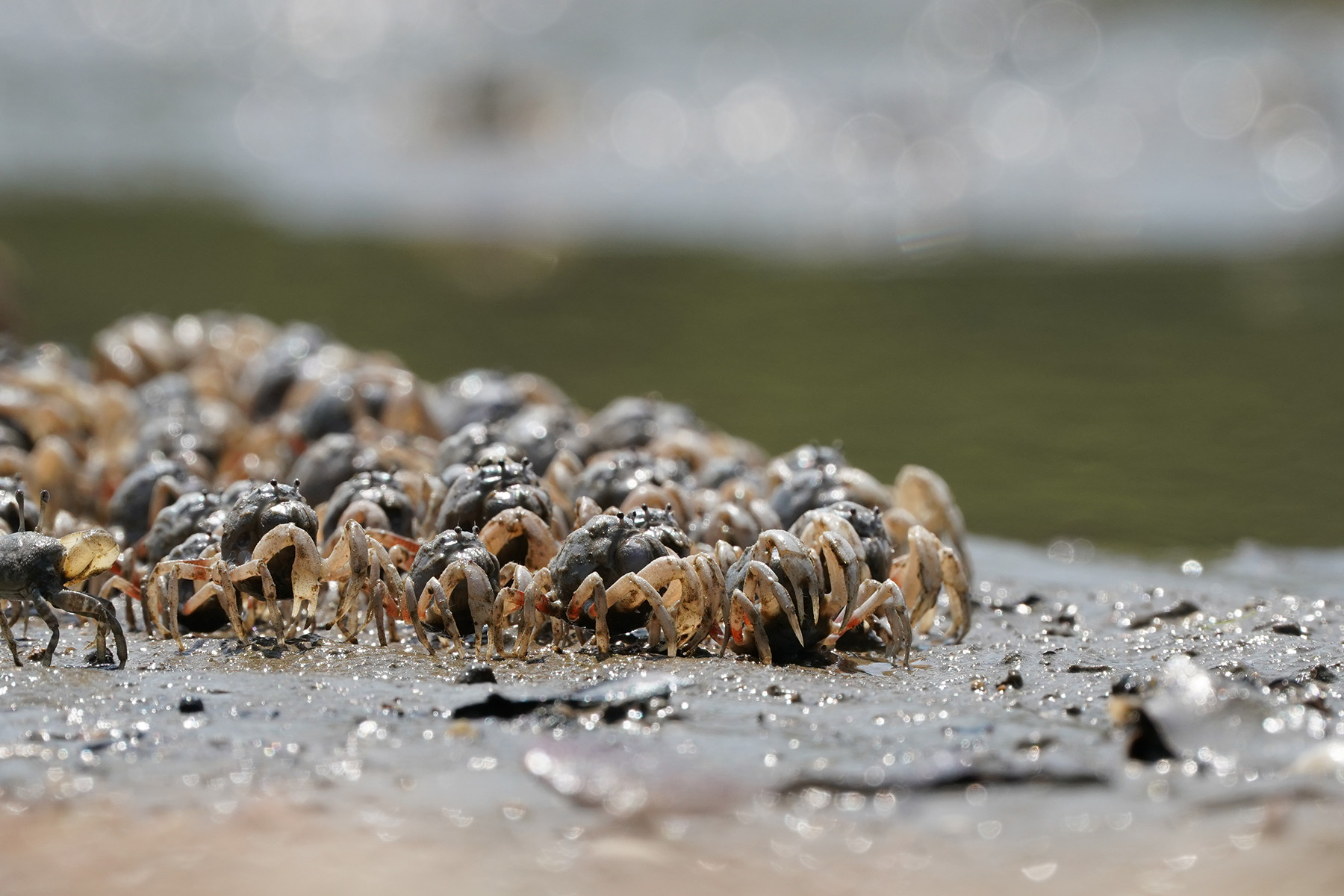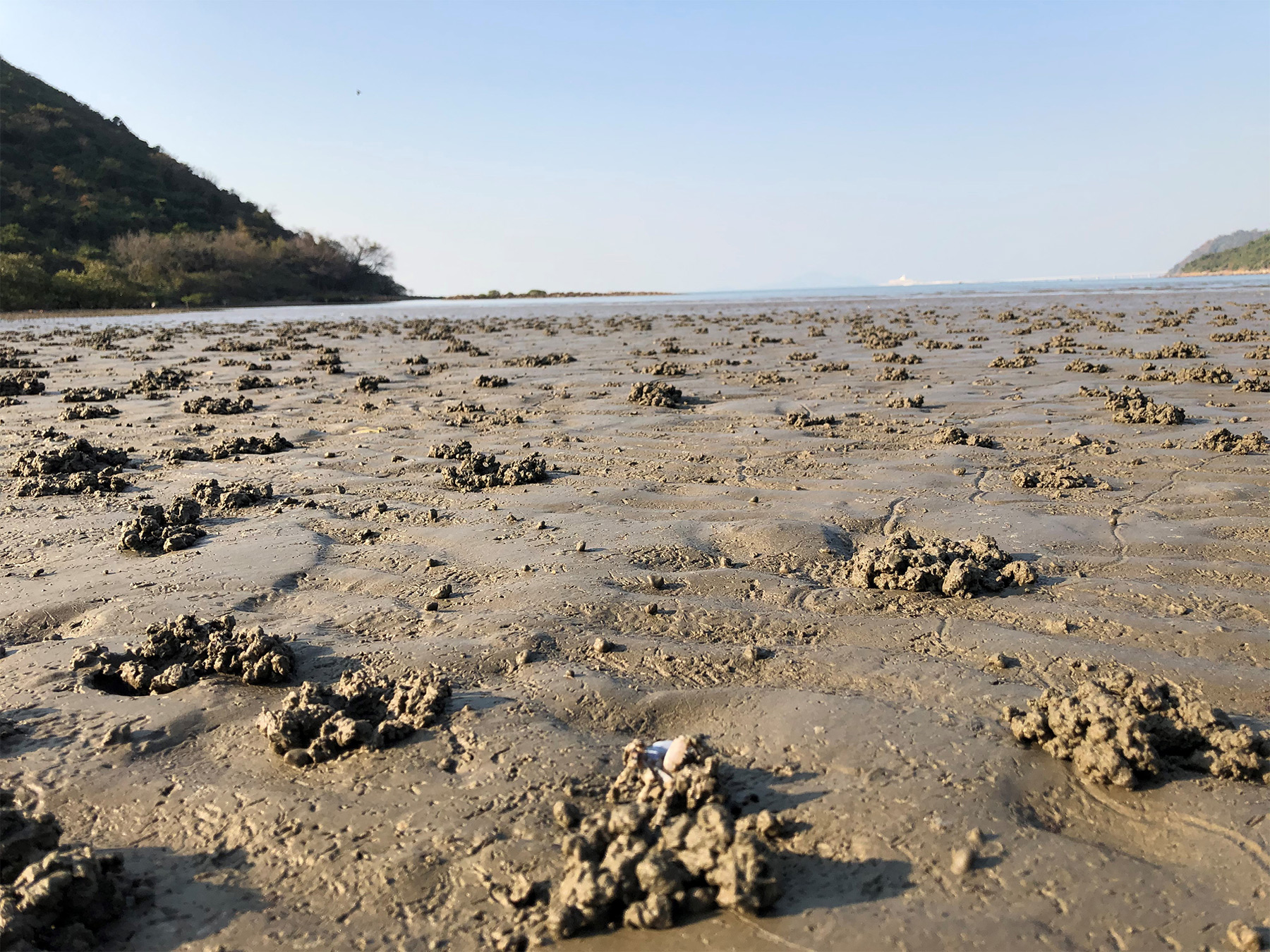Certain movements of crabs are used in Cantonese slangs to describe some human behaviours. For example, "walking sideways" is used to describe someone is domineering.
In fact, not all crabs walk sideways. For example, Soldier Crabs (Mictyris brevidactylus) will walk forward. They are small, with a grey-blue shell (cephalothorax) of only 1-2 cm wide; their rounded body resembles a marble.
Soldier Crabs live in intertidal mudflats. They spend most of the time hiding in mud holes, digging air chambers and tunnels in the mud to feed on the organic matter of the soil. They knead the excavated mud into small pellets and pile up at the entrances of the tunnels. These small mounds on the mudflats are traces left by Soldier Crabs. When the time is right, they crawl out of the mud to forage. For example, during low tide, they crawl out in groups and march forward like soldiers, so they are called soldier crabs. Although the "crab army" looks powerful, it lacks unity as the crabs are busy with individual foraging. When the crabs at the front pause, the back ones will rush forward, so they often trample on each other.
Soldier Crabs on the mudflats are easy targets for birds or other predators. However, they always take advantage of the fact that there are so many of them, as if they are lucky enough and will not be picked. They "share the good fortune and the bad" by foraging together on the mud surface to avoid being left alone and reduce the risk of being hunted. When threatened, they quickly spiral deep into the mud in a matter of seconds, hoping to escape from danger.
Soldier Crabs can be found in many places in Hong Kong, but not always in groups. On some tranquil mudflats on Lantau Island, we can still occasionally see the spectacular scene of Soldier Crabs marching. If you are lucky enough to come across one, it is worth stopping to observe their unique movements as they parade along the mudflat.


